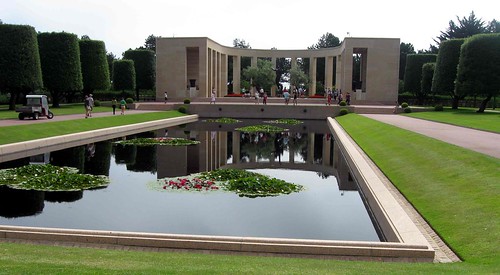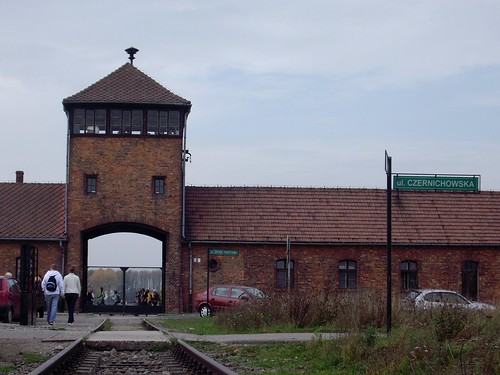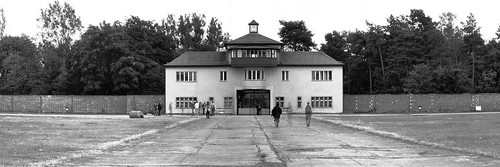Memories of World War II
The operation conducted by the U.S. Army in 1944 to land on the largest suffered by the world wars left in the French province of Normandy, a track that even today, more than 60 years later, remains unchanged. Therefore Normandy, Berlin, Hiroshima and Hawaii are now places of pilgrimage with great interest. Places to retain a memory that, fortunately or unfortunately, will never be forgotten.

Photography by Erik Cleves Kristensen
Machine-gun nests on the beach:
It is still possible to walk on the sand of some beaches in northern France and bump into the metal parapets behind which the soldiers took shelter from the bullets, see the sea through the shelters from which the German infantry tried unsuccessfully to curb allies and even found some mythical Sherman tank along the promenade.
One of the few mandatory visits the American Cemetery in Normandy, the beautiful Normandy American Cemetery, where lie the remains of 9387 soldiers and set recorded on a semicircular wall of a patio the names of 1,557 missing soldiers.
It’s fairly easy to meet any of the dozens of small local museums dedicated to the famous military operation that is scattered throughout the surrounding villages while traveling through the small rural roads. An example is Le Grand Bunker Museum, housed in the restored headquarters in which the Germans had to monitor intruders into the country across the River Orne and canal.
In St Marie du Mont, right in the same spot where the June 6, 1944 was one of the landings, is a museum dedicated to the operation of Utah Beach, the Musée du debarquement Utah Beach and not get too far Normandy cemetery in the small town of St Honorine des pertes, is the D Day Museum, an area full of guns, bombs, and even one of the boats used by U.S. squadrons to crush the Utah and Omaha beaches.
Precisely at Omaha Beach Dog Green Sector is possibly the most deadly of the ten sectors in which the United States divided the Omaha beach for landing and one of the best preserved enclaves today. Bunkers can still be walked on and the nest for a time served as a hiding place for guns.
It is worth going to the town of St Mere Eglise, the first town liberated from the Germans, only to see the facade of the church which gives its name to the people and from which hangs a replica of an unfortunate American paratrooper who was found dead. This town was one of the strategic points in the first paratroopers landed what Americans (particularly the famous 82nd and 101). Today is a witness to this event the Museum of American airborne forces, an interesting site full of different aircraft models, clothing and strategy maps used during the ‘Longest Day’.
The silence of the concentration camps
Today turned into a World Heritage Site by UNESCO and with about one million visitors annually, the concentration camp, Auschwitz work and is the flagship of the memory of Nazi barbarism, which is open to the public and also serves to remember the lengths to which man should never have come.

Photography by ♣ l u m i è r e ♣
Once you have crossed the door under which you can still read the much-remembered motto «Arbeit macht frei» (Work will set you free) all be visited: From the entrance to Birkenau, through hanging, firing squad and even the barracks, in what is forbidden to take photographs out of respect for the Jewish prisoners one day inhabited the walls of which still retain some personal belongings.
But Auschwitz was not unique. About an hour by subway from the center of Berlin is the town of Oranienburg, and in it the Sachsenhausen camp. The gloomy silence of the vast concourse where the barracks were in contrast to the disturbing presence of a playground and a casino for the exclusive use of members of the SS. Only two barracks still standing completely visited, 38 and 39. Entering them to confirm the drama involves checking the minimum space between bunks in which they were overcrowded or people visisted the showers and footbaths in which not only the cold water froze the blood, but so did the torture. Outside, a paved road marks the place where less fortunate prisoners suffered the worst punishment: Walk supporting weights up to 15 kilos in order to test the resistance of the soles of the boots.

Photography by T. Little Street
Before concluding the visit is possible to see a makeshift brick barracks built in 1940 designed to house captured Allied soldiers. Although the entrance is visible intentionally stopped clock with the time that Soviet troops were present in Sachsenhausen at 11:08, the facilities continued to be used for the same purposes by the Soviet side on completion the war until 1950.
Leave a Reply
You must be logged in to post a comment.
Recent Comments